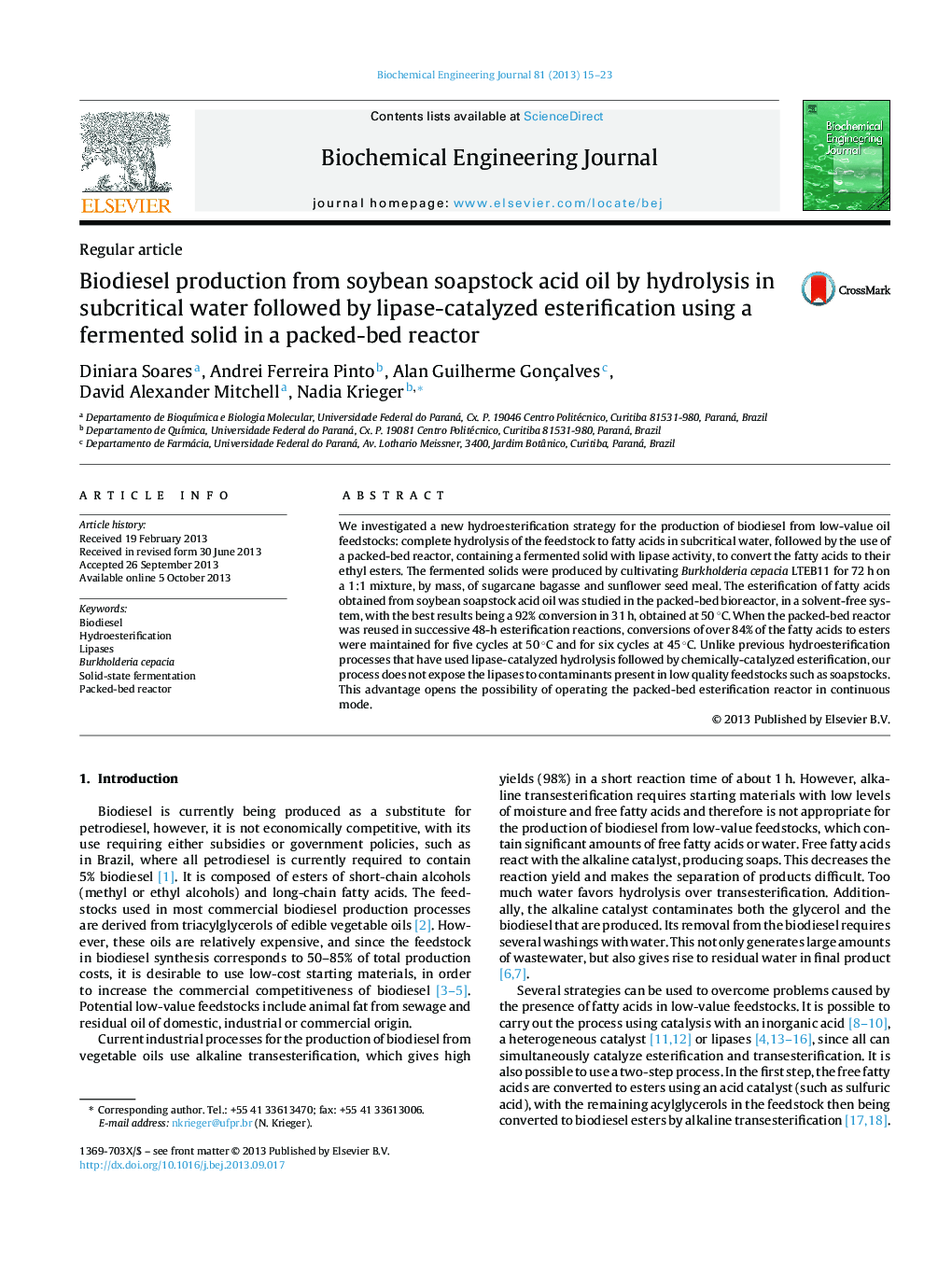| Article ID | Journal | Published Year | Pages | File Type |
|---|---|---|---|---|
| 3214 | Biochemical Engineering Journal | 2013 | 9 Pages |
•Free fatty acids produced by hydrolysis of low-value feedstocks in subcritical water.•Free fatty acids from 1st step esterified with ethanol in lipase-catalyzed 2nd step.•Lipases contained in fermented solid produced with Burkholderia cepacia.•Studies focused on production of biodiesel esters from soybean soapstock acid oil.•Best conversion of fatty acids, obtained in packed-bed reactor, of 92% in 31 h.
We investigated a new hydroesterification strategy for the production of biodiesel from low-value oil feedstocks: complete hydrolysis of the feedstock to fatty acids in subcritical water, followed by the use of a packed-bed reactor, containing a fermented solid with lipase activity, to convert the fatty acids to their ethyl esters. The fermented solids were produced by cultivating Burkholderia cepacia LTEB11 for 72 h on a 1:1 mixture, by mass, of sugarcane bagasse and sunflower seed meal. The esterification of fatty acids obtained from soybean soapstock acid oil was studied in the packed-bed bioreactor, in a solvent-free system, with the best results being a 92% conversion in 31 h, obtained at 50 °C. When the packed-bed reactor was reused in successive 48-h esterification reactions, conversions of over 84% of the fatty acids to esters were maintained for five cycles at 50 °C and for six cycles at 45 °C. Unlike previous hydroesterification processes that have used lipase-catalyzed hydrolysis followed by chemically-catalyzed esterification, our process does not expose the lipases to contaminants present in low quality feedstocks such as soapstocks. This advantage opens the possibility of operating the packed-bed esterification reactor in continuous mode.
Graphical abstractFigure optionsDownload full-size imageDownload as PowerPoint slide
